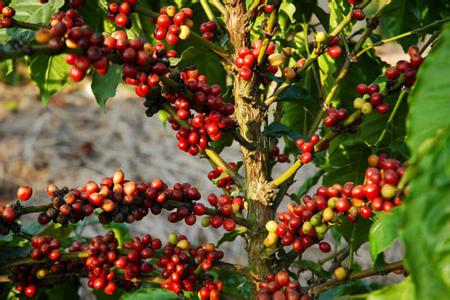Coffee culture
It also caused Islamic drinks to be brought to Christians in Rome, and there are two arguments about whether they agree or not.

The popularity of coffee was initially related to religion, but later became a threat to religious discipline. Coffee has become a subversive drink. It brings people together to exchange wisdom and instigate political debate and revolt. In 1656, Etoman the Great banned coffee shops for political reasons and banned people from drinking coffee. In 1674, European women complained in a petition against coffee that whenever there was an emergency at home, men were always away because they were all in the coffee shop. The French wine merchant intends to tarnish the reputation of coffee because coffee is the number one enemy of wine.
King Clement VIII of France at that time, although it was the devil's drink, it was so delicious. It's a pity to let the pagans monopolize this drink! "so I accepted the coffee and let the Christians who came to be baptized drink it.
There are countless coffee houses in Britain, this kind of social place for gentlemen is very popular, where men discuss politics, literature, business and so on.
In 1657, an English newspaper reported that coffee has many effects on stomach ulcers, strengthens the heart, promotes digestion, invigorates the spirit, relaxes the mood, treats eye diseases, colds, coughs, lung diseases, headaches, edema, gout, scurvy, adenosis, and other diseases.
It began when the Turkish ambassador offered coffee to Louis XIV in 1669. Turkish coffee has also spread to France, and French society has also been influenced by the charm of coffee to make countless salons, resulting in brand-new literature, philosophy or art.
Such a wave of coffee culture has affected the general public, and coffee on street corners has also begun to flood. Especially the Coffee Brogob, which was born in 1686, is famous for its intellectual salon because of the continuous gathering of Balzac, Rousseau and other cultural people.
Soon after, in Nasbrasso, Italy, he began to drink French ground coffee, which caused a change in the drinking style of coffee. Coffee is becoming more and more popular, so more and more people are interested in growing coffee.
In the 13th century, patrons of manufacturers took out a large number of raw beans and planted them everywhere. In the 17th century, Indians also toured the racecourse and Budan, from manufacturers stealing coffee fruits to growing them in Maisol in South India.
And, in the first half of the eighteenth century, there was Gabriel, a French admiral. Mathieu. De. The romantic story of using his drinking water to irrigate coffee seedlings and growing them in the French territory of Matinique.
Dangde. When Kerry was about to leave Paris, he managed to get some coffee trees and decided to take them back to Martinique. That's about 1720 or I723. He may also have traveled back and forth twice, because the first inoculation did not survive. To be sure, in the end, virtue. Klee set sail from Nantes with one of the best saplings that had been carefully cared for. The saplings are kept in a glass box on the deck, which can prevent sea water from splashing and keep warm.
De. Kerry's diary describes how his ship was threatened by Tunis pirates and how he survived a storm. The diary also mentioned that there was a man on board who was jealous of him and tried to destroy the small tree and even broke a branch in a struggle. Later, the ship ran aground and could not be self-sufficient in drinking water. Klee even watered the sapling with the water he drank.
Soon after, coffee spread widely to Central and South America, and the cultivation of relative coffee also expanded to all parts of the world.
Important Notice :
前街咖啡 FrontStreet Coffee has moved to new addredd:
FrontStreet Coffee Address: 315,Donghua East Road,GuangZhou
Tel:020 38364473
- Prev

macchiato
Macchiato coffee macchiato coffee is a kind of milk coffee, it is first mixed milk and vanilla syrup, then add milk foam, then pour coffee, finally in the milk foam drizzled with grid caramel. Preparation method: Ingredients: Italian coffee 100ml, fresh milk 300ml, caramel cream 15ml, caramel syrup 15ml Cup: 500ml large cup, with coffee spoon, sugar
- Next

Seattle caf é Vita Coffee Roasters
Seattle's Caffe Vita Coffee Roasting Company was founded in 1995 by Mike McConnell, Mike Prins and Michael Foster.
Related
- What documents do you need to go through to open a coffee shop? coffee shop coffee shop certificate processing process
- How to purchase Coffee beans in small Cafe how to choose a suitable supplier for domestic Coffee supply Company
- How to drink Starbucks Fragrance White Coffee? how to make Australian White Coffee? what Italian coffee beans are recommended?
- The Story of Flora Coffee: the name of Flora Coffee Bean and the implication of the Flowers on Florna Coffee
- How much does a cup of coffee cost? How much is the profit of a cup of coffee? What is the profit of the coffee shop in a year?
- Yunnan small Coffee, known as "fragrant Coffee", introduces the characteristics of Alpine Arabica Coffee producing areas in Yunnan, China
- 2023 latest Starbucks full menu price list how much is a cup of Starbucks coffee what is better to drink the most popular hot and cold drinks recommended
- Starbucks different kinds of Coffee Price list Starbucks menu 2023 Top Ten Best drinks in Starbucks
- Starbucks Spring praise Comprehensive matching Coffee Bean theme Story Packaging implication and taste description
- The cost of a cup of coffee latte American coffee cost price and selling price

